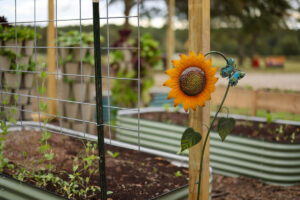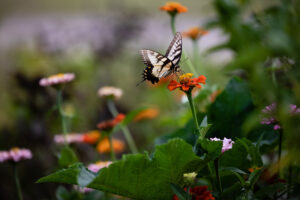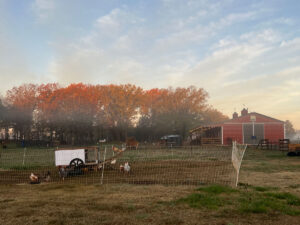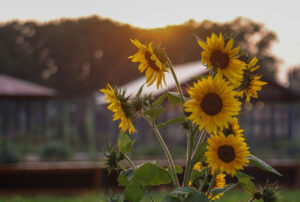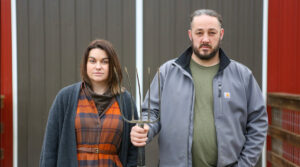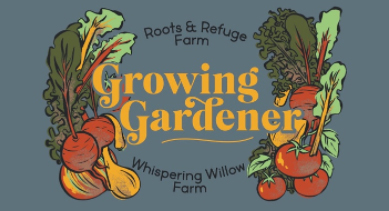Learning how to prune tomato plants properly is key if you want to grow the best tomatoes you will ever eat. Whether you grow cherry tomatoes or giant heirlooms, start from seed or purchase starts, grow in a pot or in a vegetable garden bed, these pruning tips can ensure you turn out a maximum tomato yield that will leave you feeling like a pro.
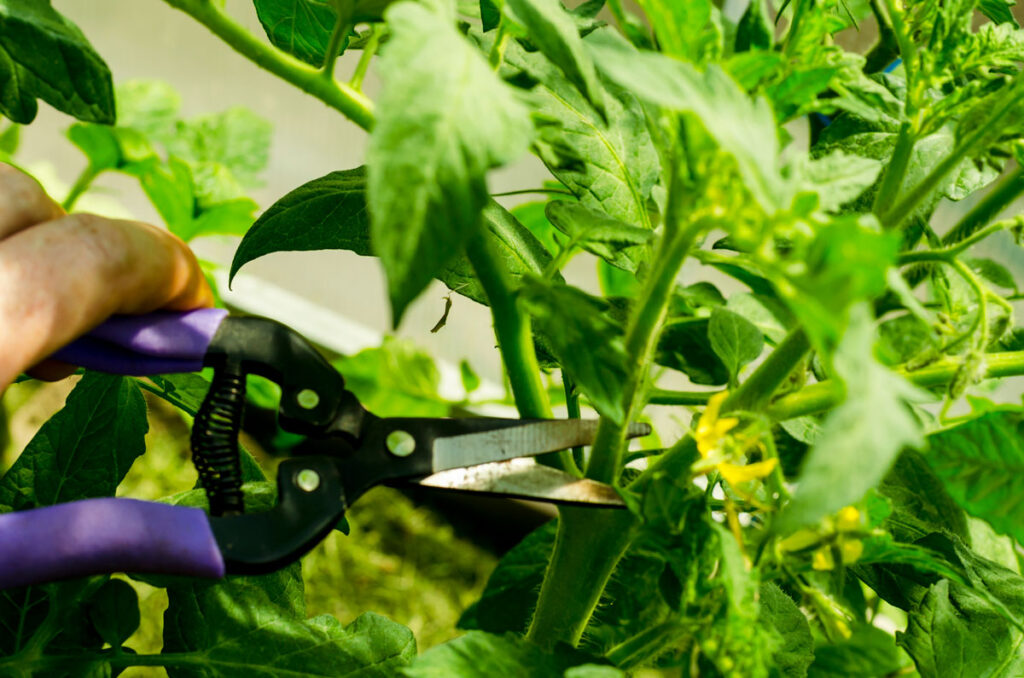
Why Do Tomato Plants Need Pruning
Moisture is the arch-nemesis of healthy tomato plants. Any conditions that keep tomato leaves wet are a recipe for disease and fungus. Learning how to prune tomato plants increases the air circulation by thinning and thereby decreasing the moisture and disease.
The main reason I prune tomatoes is because I live in a hot, humid climate and I grow tomatoes close together in raised beds. I prune my tomato plants pretty heavily, but you might live in a cooler or drier climate and find you don't need to prune as much or at all.
You may have never pruned your tomatoes and never had an issue. If that is the case, keep on keeping on.
However, if you have dealt with tomato diseases and the frustration of losing your harvest early, then learning how to prune tomato plants is definitely something you should try.
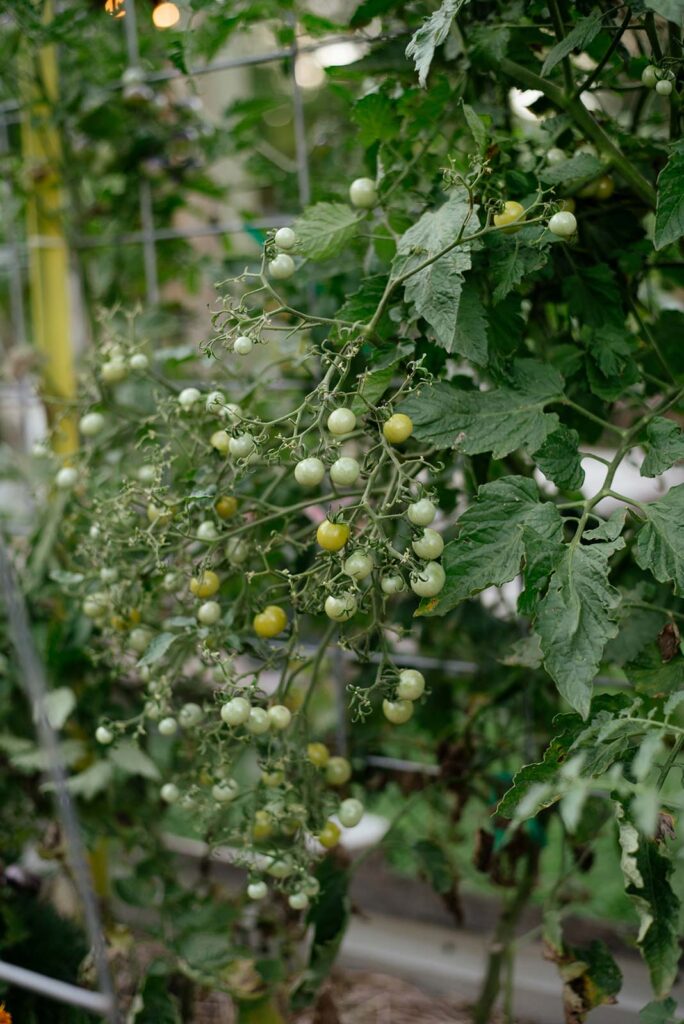
What Types of Tomato Plants Need Pruning
All tomato plants are one of two types, determinate or indeterminate. The determinate varieties are usually labeled dwarf, mini-dwarf, or bush. Determinate tomatoes have a determined amount of growth genetically.
They will only grow to a certain size with a certain amount of flowers and then they are done. You do NOT want to prune a determinate tomato variety because you will be seriously cutting into your tomato harvest.
Most tomato varieties are indeterminate. Indeterminate tomato plants can keep growing as long as the plant is healthy and supported and the temperature cooperates. Learning how to prune tomato plants of the indeterminate varieties keep the whole plant healthier and producing for longer.
If you are still unsure which type of tomato you have, this post on determinate vs. indeterminate tomatoes will build your confidence to identify one from the other.
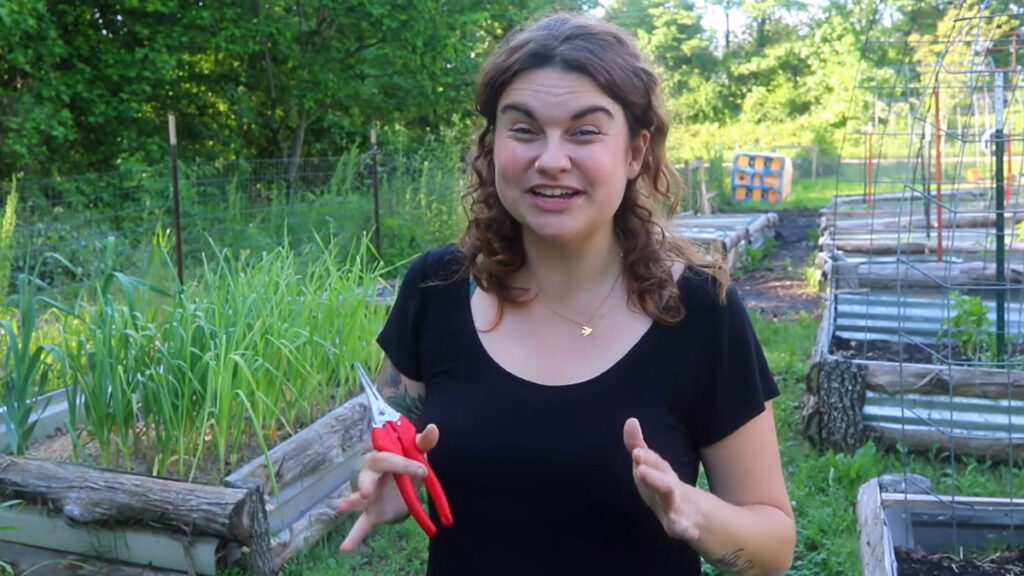
Supplies Needed
Pruning Tool – All you will need to prune tomatoes is a simple pruning tool. You likely already have something on hand, but if not, head to your garden center and pick up some pruning sheers.
In a pinch, scissors can work as well. If the plant is small, you can just pinch the stems off with your fingers, but sharp garden shears are ideal to cleanly cut off the stems without damaging the plant.
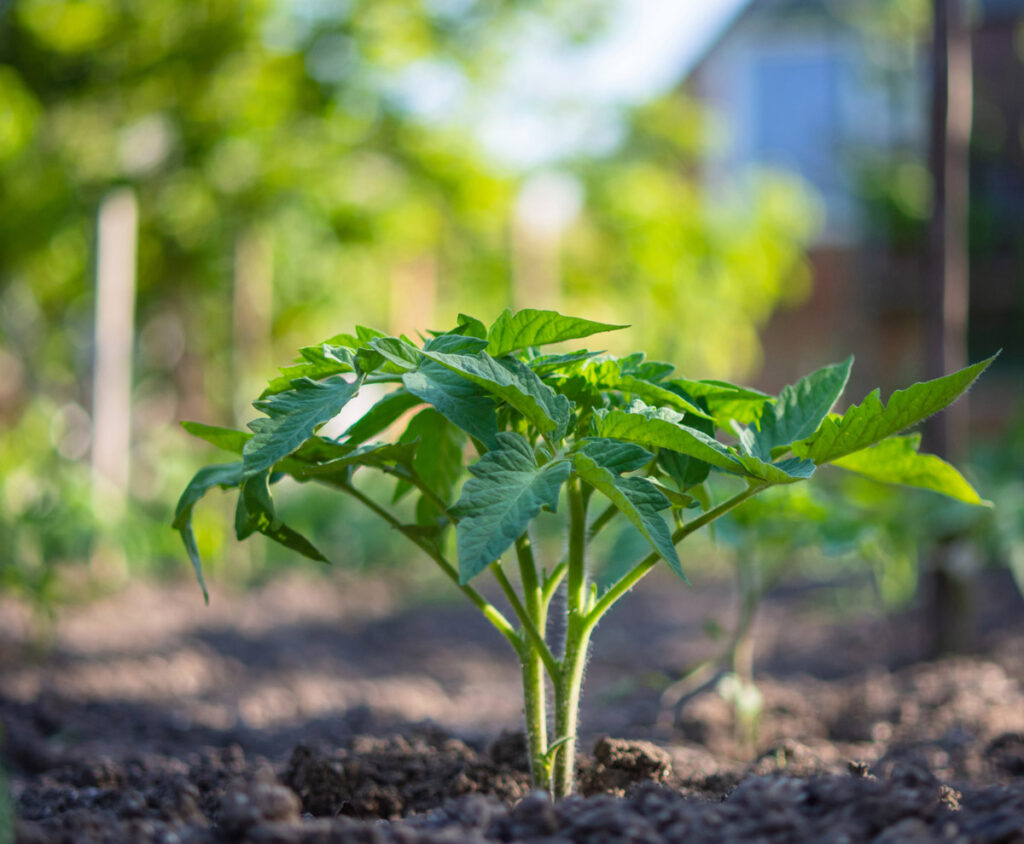
How to Prune Tomato Plants
It is best to get started pruning your tomato plants when they are young.
I usually start when my tomatoes are transplanted into my garden and have grown to about 12 to 15 inches tall. Our goal is a healthy plant with maximum fruit production. A little preventative maintenance can go a long way.
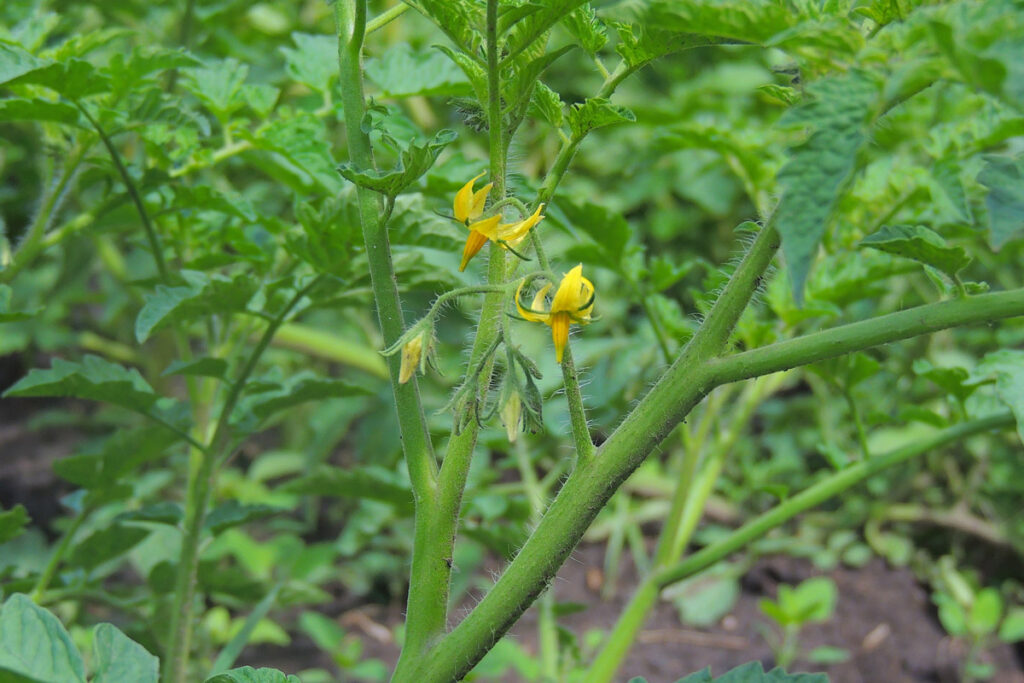
Pinch Off the First Set of Blossoms
When you first transplant your tomatoes into the ground (within the first week or so), pinch off any blossoms.
Pinching off blossoms seems counterintuitive to growing fruit, but just trust me on this one. If your plants are trying to set fruit when you first put them in the ground, their energy is not focused on growing deep roots. Pinching off these blossoms will lend to a better harvest in the long run because the plant will have a better and stronger root system.
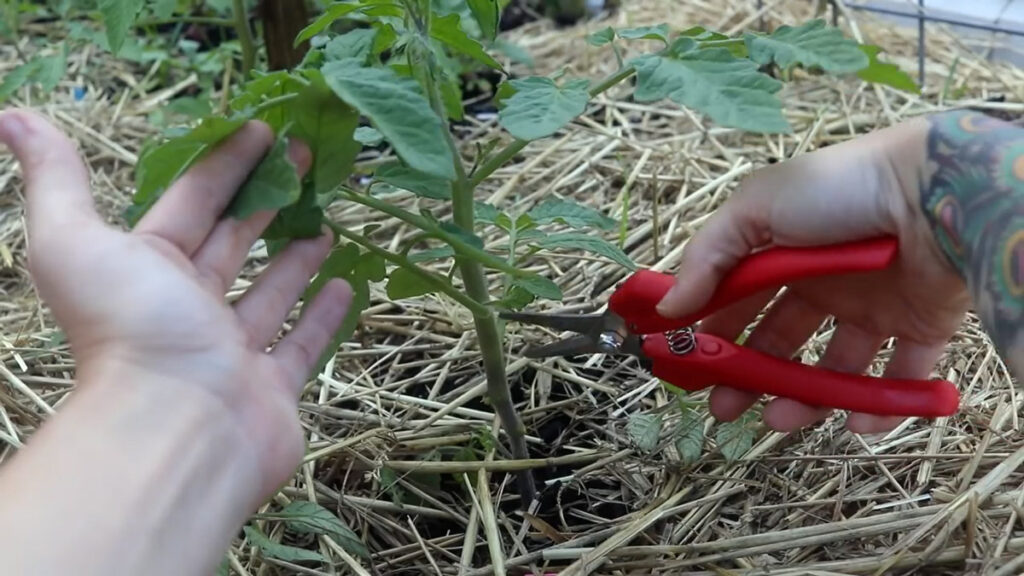
Trim Off Anything that Touches the Ground
Any branches that have leaves touching the ground need to be trimmed off.
Leaves touching the ground will be more prone to disease and fungal infections because they can get splashback from rain and watering which keeps the leaves moist.
Additionally, low-hanging leaves are more accessible to critters, so removing them also helps to prevent insect damage.
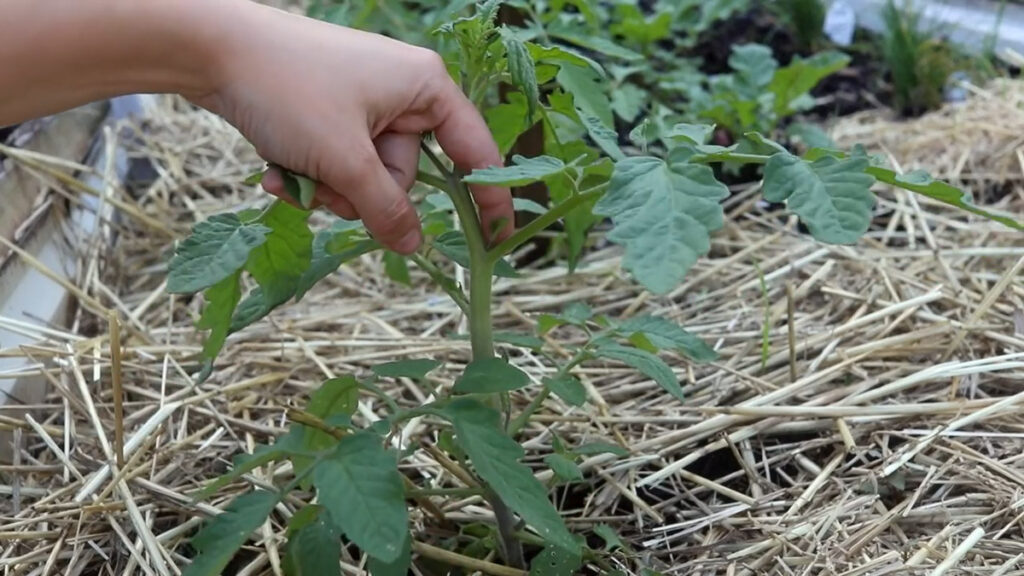

Remove the Suckers
The tomato suckers are found in the “armpits” of the plant which is where the main stalk (or stem) and the leaf stems (or branches) meet. Locate the suckers and trim them off.
If you do not prune the tomato plant, it will get very bushy with lots of big strong stalks that bear lots of flowers.
While this sounds great, the downside is that a big, bushy plant will have restricted airflow. The plant will harbor moisture which can make it sick.
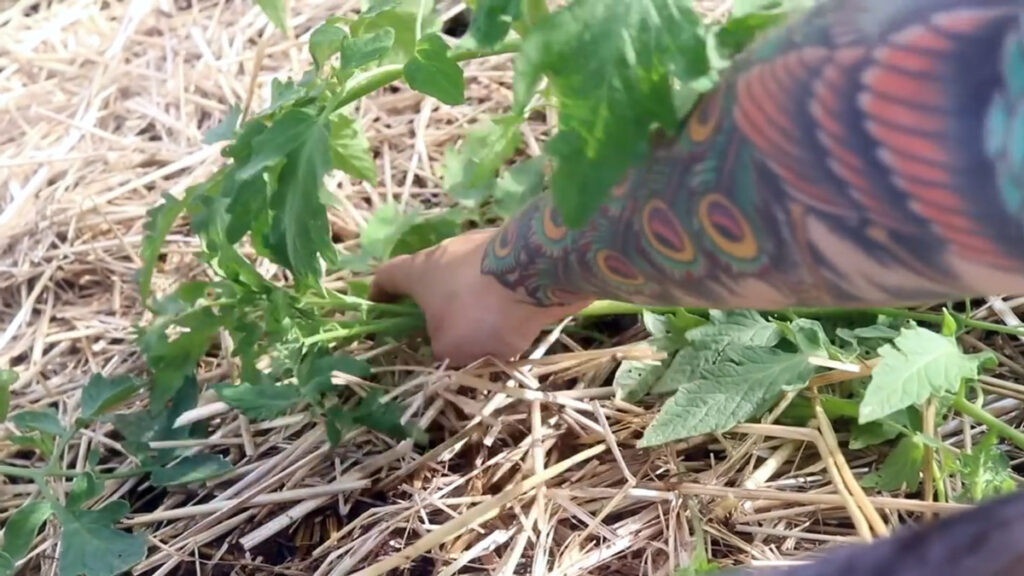
Clean Up the Clippings
Clean up any leaves, stems, and suckers that you cut off. Do not leave them lying around your plants. If they are healthy, without spots or brown curled leaves, you can compost them.
However, if there are any signs of disease, discard them in the trash. Don't even pile them up in or near your garden as diseases like blight have the potential to ruin a tomato crop for years to come.
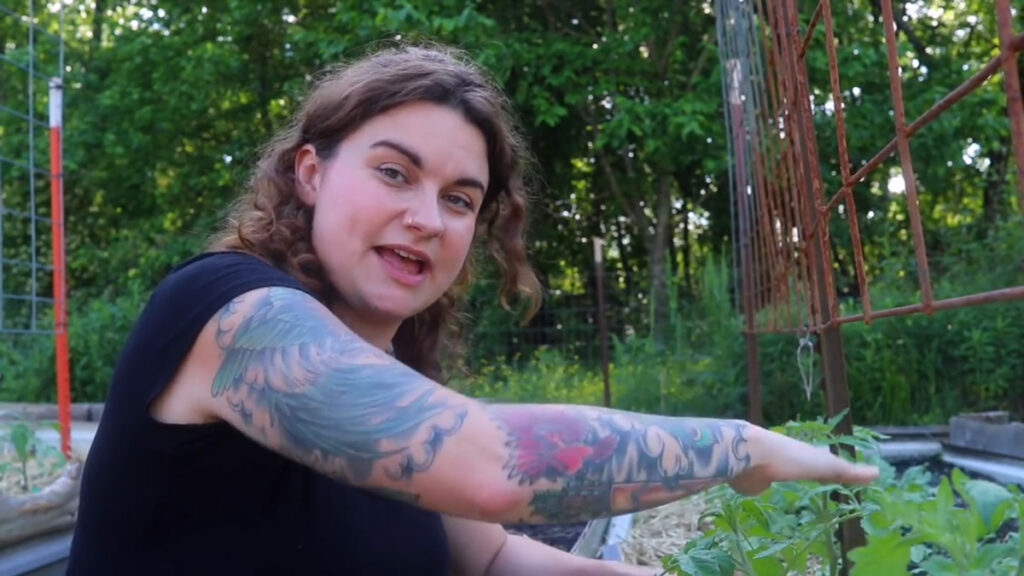
Continue Pruning
As the plant continues to grow up, continue to cut off the lower leaves and the suckers every few days.
When the lower leaves begin to turn yellow, this is a good indication they need to be removed. Leaves turning yellow are no longer producing photosynthesis, and become an energy drain on the plant.
This is a good opportunity to train your tomatoes to your trellis. I use cattle panels that are suspended about 18 to 20 inches above the ground for tomato trellises. Eventually, everything below my trellis (which is the lower 18 to 20 inches of the plant) will be completely trimmed off of my tomato plants.
You can learn how to build your own super easy and affordable garden trellises here to use for your tomatoes, beans and peas.
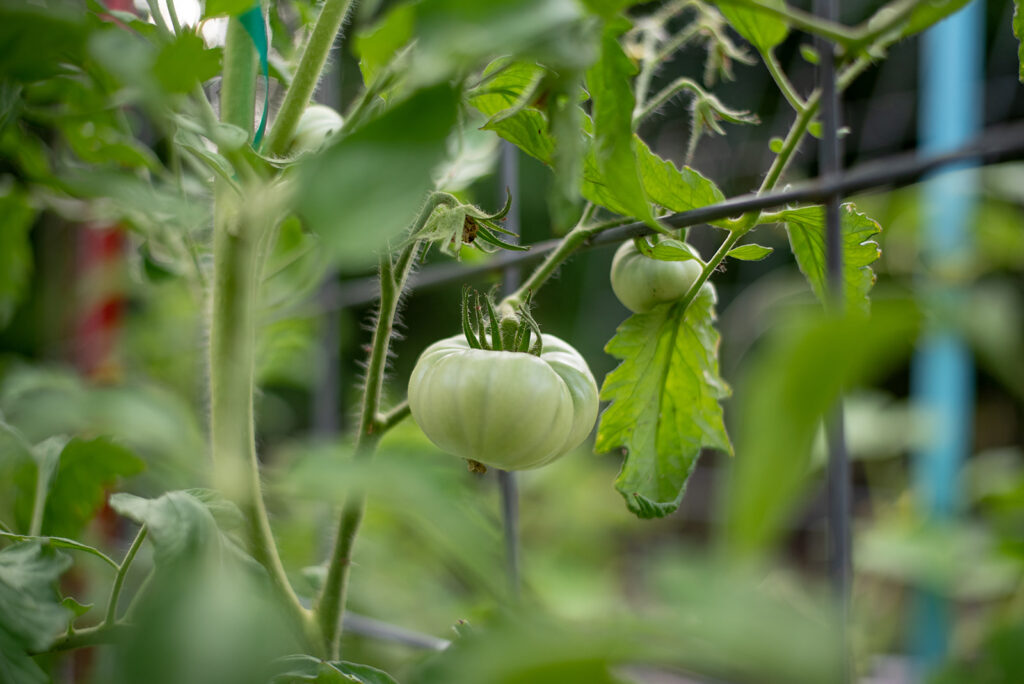
Tomato Pruning Tips
How to Prune Tomato Plants if You Didn’t Start When the Plants Were Young
Let’s be honest, sometimes we don’t get out in the garden every few days. Sometimes we have to go out of town or it rains for a week, and we come back to the garden and find massive growth.
When a sucker is allowed to develop, it creates a stem that is almost as big as the main stalk. Cutting off these large sucker stems can create a wound that the plant has to heal from, and leaves a larger opening where infection could come in.
When pruning these larger stems, sharp garden shears are a must! The wound should be as small and clean as possible without pulling off any skin or damaging the plant.
It is really important to prune these larger stems when it is dry outside and not during the midday heat. Morning is the best time, but the evening is okay, too. Don’t prune if there's rain in the forecast or before you plan to water.
Sometimes on more mature plants, you will not be able to tell which is the main stalk and which is a sucker. You do not want to risk cutting off the top of the plant because that will stunt the growth. If this is the case, it is best to leave both stalks.
Topping Tomato Plants
Topping tomatoes simply means cutting the top off. Remember that indeterminate tomatoes will continue to grow and produce fruit if you keep them healthy and supply them with support.
That is true unless you cut the tops off because tomatoes grow and develop new leaves from the top. This is why we prune from the bottom up so we don’t accidentally lop the top off and stunt its growth.
However, topping them causes the plant to focus its energy on ripening fruit that is already set instead of growing more stems and more flowers.
In the case that your tomato plant is running out of space (it has gotten too tall for your trellis support) or running out of time (if your growing season is three or four weeks before the frost comes) topping tomato plants is actually beneficial.
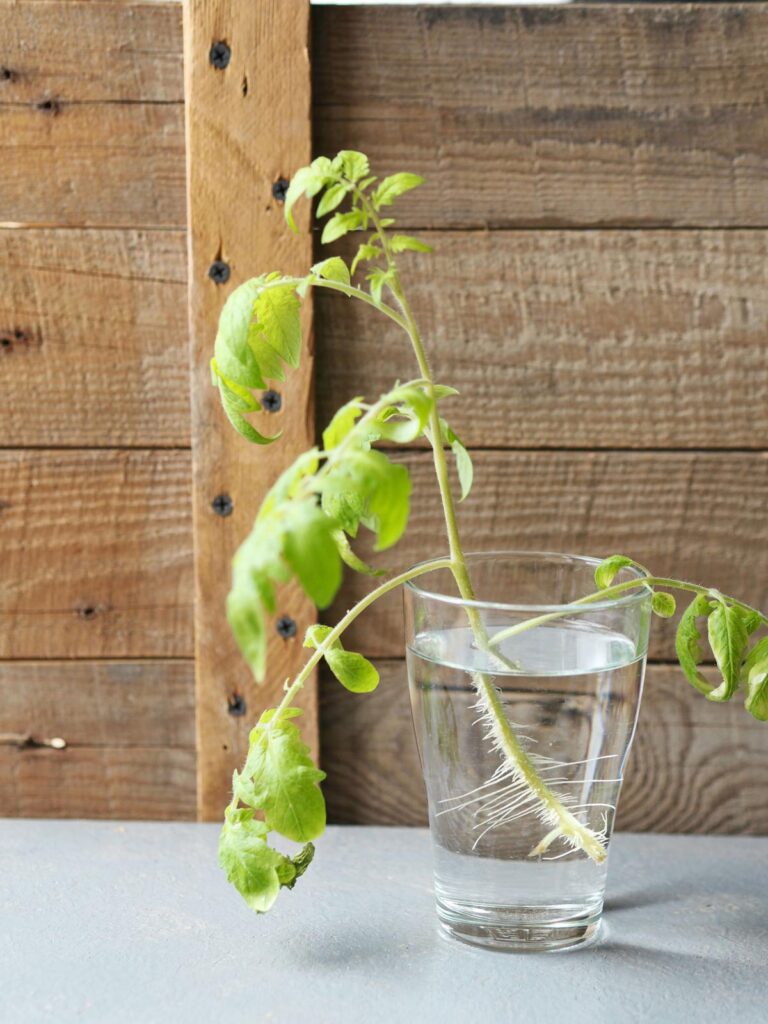
Cloning Suckers
One benefit of learning how to prune tomato plants is that trimmed suckers can be saved to grow clone plants. Simply take small healthy suckers and stick them in a glass of water.
The suckers will grow a new root system and can be planted right into the ground.
Do not try to root a large clipping, it will be too much plant to support and will not root successfully.
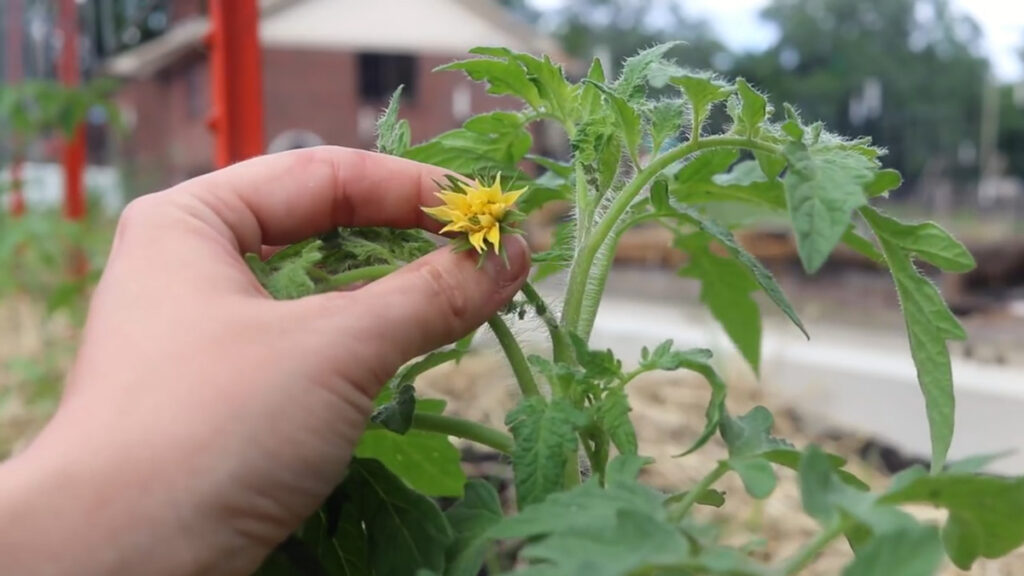
Watch for Fasciated Blossoms
Fasciated or fused blossoms are a genetic mutation where multiple blossoms are fused together.
Have you ever seen those big, funky heirloom tomatoes that have a lot of crevices, cracks, and chunks that look like conjoined twins or triplets? Those started as a fasciated blossom.
Unfortunately, when tomatoes are really catfaced like that, there are parts that don’t form right and will cause rot. Additionally, this type of flower cluster can draw a lot of energy from the plant to produce a massive fruit.
If you notice them, pinching off the fasciated blossoms will give you a more useful, uniform harvest.
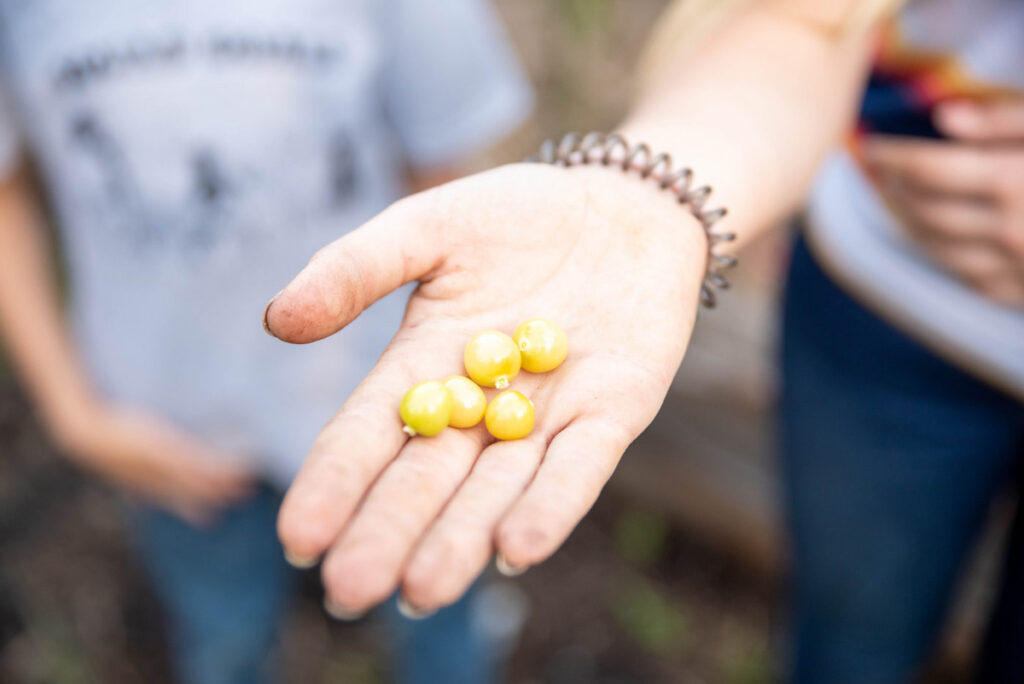
More Gardening Tips
- Garden Planning Basics (How to Plan Your Garden)
- How to Get Rid of Tomato Hornworms Naturally
- Growing Determinate and Indeterminate Tomatoes
- How To Plant Tomatoes the Best Way (Tips for Success)
- How to Grow Salad Greens in the Winter
- A Complete Guide to Vertical Gardening (On a Budget!)
- How to Get Rid of Flea Beetles in Your Garden
- How to Build a Garden Arch Trellis or Garden Arbor (for $30!)


